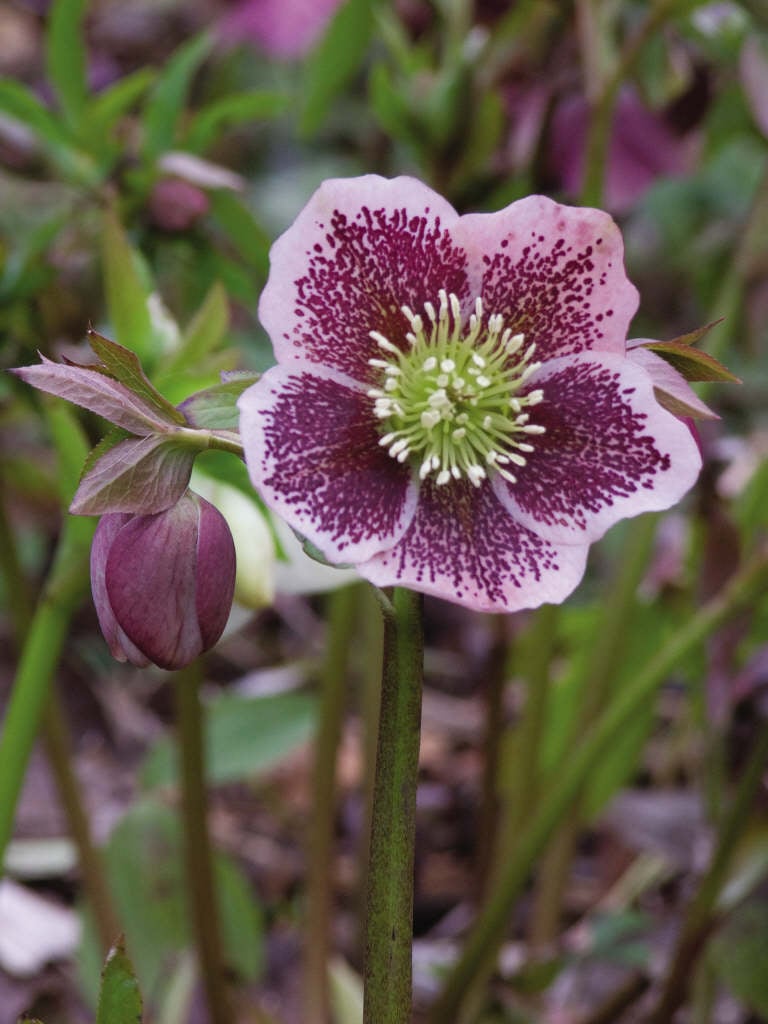Helleborus × hybridus
hybrid Lenten rose
A semi-evergreen perennial with divided, glossy, dark green leaves and branched stems bearing bowl-shaped flowers in a range of colours, including white, pink, green, yellow, and purple, sometimes spotted within
Other common names
Lenten roseSynonyms
Helleborus orientalis hort. mixedHelleborus orientalis misapplied
see moreHelleborus orientalis hort. hybrid
Helleborus orientalis misapplied
Helleborus × hybridus mixed
Size
Ultimate height
0.1–0.5 metresTime to ultimate height
2–5 yearsUltimate spread
0.1–0.5 metresGrowing conditions
Moisture
Moist but well–drainedpH
Alkaline, NeutralColour & scent
| Stem | Flower | Foliage | Fruit | |
| Spring | Green Pink Purple White Yellow | Green | ||
|---|---|---|---|---|
| Summer | Green | |||
| Autumn | Green | |||
| Winter | Green Pink Purple White Yellow | Green |
Position
- Full sun
- Partial shade
Aspect
West–facing or East–facing or South–facing or North–facing
Exposure
Sheltered Hardiness
H7Botanical details
- Family
- Ranunculaceae
- Native to GB / Ireland
- No
- Foliage
- Semi evergreen
- Habit
- Bushy
- Potentially harmful
- Harmful if eaten, skin irritant. Wear gloves and other protective equipment when handling. Pets: Harmful if eaten, skin irritant. For further information and contact numbers regarding pets, see the HTA guide to potentially harmful plants
- Genus
Helleborus can be rhizomatous, herbaceous or semi-evergreen perennials forming a clump of pedate basal leaves, or evergreen with erect, leafy stems. Large, bowl-shaped flowers are borne in loose clusters in late winter or spring
- Name status
Correct
How to grow
Cultivation
Thrives in neutral to alkaline soils that are moist, fertile and humus-rich. Partial shade is ideal but can tolerate full sun. Provide shelter from strong, cold winds. Mulch annually in autumn
Propagation
Propagate by seed sown in pots in a cold frame as soon as seed is ripe
Suggested planting locations and garden types
- City and courtyard gardens
- Coastal
- Cottage and informal garden
- Rock garden
- Flower borders and beds
- Underplanting of roses and shrubs
Pruning
Remove faded or damaged foliage as the flowers appear
Pests
May be susceptible to hellebore aphid, hellebore leaf miner and snails
Diseases
May be susceptible to hellebore leaf spot and hellebore black death
Get involved
The Royal Horticultural Society is the UK’s leading gardening charity. We aim to enrich everyone’s life through plants, and make the UK a greener and more beautiful place.
